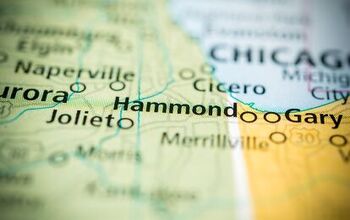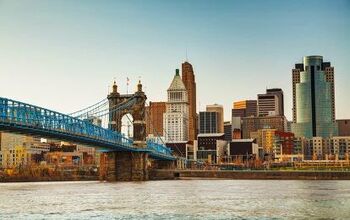10 Most Dangerous Neighborhoods in Indianapolis

Indianapolis is not only the seat of Marion County, but it is the state capital of Indiana. It is the most populous city in the state with a consolidated population of 886,220 people, which also makes it the 17th most populous city in the united states. Furthermore, it is the 16th largest city based on the land area in the U.S.
After carefully researching Indiana as a whole, we’ve discovered that its most dangerous neighborhood is Bos due to the extremely low average household income. The fact that it has such a low poverty rate contributes to a slew of issues such as run-down buildings, drug problems ad a crumbling economy.
Also known very commonly as Indy, there are many reasons to visit there or if you are passionate enough to move there. There are two major sports clubs, several museums, and four university campuses. They are famously acknowledged for having the world’s largest single-day sporting event, the Indianapolis 500.
Do You Need to Hire Movers?
Get free, zero-commitment quotes from pro contractors near you.

Related Content: Safest Neighborhoods In Indianapolis | Atlanta vs. Indianapolis | Most Dangerous Cities In Indiana
A Quick Background On The Neighborhoods Of Indianapolis
Indianapolis is divvied up into 99 communities, which may also include smaller neighborhood s. Actual borders do not necessarily separate the neighborhoods, but through subtle differences, one can notice where one neighborhood ends and the next begins. Several neighborhoods are even recognized for their historical significance through the Indianapolis Historic Preservation Commission.
As grand as Indianapolis may seem, there are some dark sides to the city. Compared to other communities, Indianapolis has one of the highest crime rates throughout the nation, regardless of size. There is a one in twenty chance of being a victim of a violent crime. Therefore, it is crucial to educate yourself on where to go and what places to avoid, whether you plan on visiting or living there.
How The Most Dangerous Neighborhoods Are Determined
Many factors go into determining whether a neighborhood is dangerous or not, such as population compared to home values and the amount of income per household. Poverty-stricken areas are more susceptible to crime as families do anything they can to make ends meet. Plus, they usually become targets for crime since many turn to selling drugs to put food on the table.
Something else that helps to determine the state a neighborhood is in is the deterioration of buildings. Not only does the crime rate determine the danger of a neighborhood, but also whether buildings are falling apart. No one should be walking along with these areas as they could be stricken with a brick or some other material and hurt severely.
As far as Indianapolis goes, the dangerous neighborhoods were very close in numbers when it came to crime. However, we noticed the average income changes according to each area and graded the neighborhoods according to that. These areas are severely run down as the poverty is high, and there isn’t much option to fix up the areas.
10 Most Dangerous Neighborhoods of Indianapolis
If you are planning a trip to Indianapolis anytime soon, it’s vital that you become familiar with the city so that you can stay safe while enjoying your time there. Here are the top 10 most dangerous neighborhoods of Indianapolis.
10. Westside
- Population: 19,158
- Average Income: $27,705
Westside is, of course, on the west side of Indianapolis. It is a larger neighborhood of almost 7 square miles; In addition to the poor educational system, both of these probably are a factor in the crime being more than 41% of the national average. The risk of robbery is the greatest at 60% higher.
With better schools and a higher average income, this neighborhood could do well and get the crime rates to be lower. Since living expenses are predominately low and there is an even split of homeowners and renters in the area.
9. Wanamaker
- Population: 2,979
- Average Income: $62,936
Found in the southeast corner of Indianapolis, the Wanamaker neighborhood has some similarities with Renaissance Place. This neighborhood seems like a well-to-do place on the outside, especially with the average income being way above the average national income. Furthermore, overall expenses are lower as well.
However, Wanamaker has a crime rate that is 30% higher than the national average, and the risk of assault and murder is 33 to 37% higher, respectively. The only significant factor in this neighborhood is the school system. The district is rated average, and there is a significant drop in attendance from ninth grade to twelfth grade.
8. United Northeast
- Population: 25,162
- Average Income: $28,908
United Northeast could be viewed as a struggling neighborhood. Located in the northeast corner of Indianapolis, United Northeast is a reasonably large neighborhood. It covers almost eight square miles of the city.
Their overall expenses may be 27% lower than the national average, but their average income is almost half of the average of the nation. Their education is below average, and only 7% of adults pursue further education. The overall risk is 42% higher than that of the nation, with robberies being the most common.
7. Martindale
- Population: 8,529
- Average Income: $25,946
The chances of being robbed in this northside neighborhood of Indianapolis is 57% greater than the national average. Overall, crime in this area is 36% higher. More residents own their own homes in this neighborhood, but the average income is almost half of that of the national average.
The overall expenses are also lower than the nation, so one can only think poor school structures play a crucial role in the crime in the area. Only about 8% of adults have a bachelor’s degree, and there is a significant decline in attendance for high school students from their freshman to senior year.
6. West Indianapolis
- Population: 11,878
- Average Income: $30,759
This is a large neighborhood to the southwest of downtown Indianapolis and where there are more people residing, more crime may follow. Residents are evenly split between owning and renting, so less of a factor for crime; however, in West Indianapolis, the crime rate is more than 35% of the nation.
The school systems are below average, and only about 6% of the population in this neighborhood move on to higher education. The average cost of living is approximately 15% lower than the nation, so it is hard to understand why this neighborhood is riddled with crime.
5. Near North
- Population: 8,844
- Average Income: $39,525
The overall crime risk in the Near North neighborhood is 28% greater than the national average, with robberies being the most risk. The school system is below average, and the most common level of highest education is a high school diploma.
The cost of living is significantly lower than the rest of the nation, but residents choose to rent their homes instead of purchasing it. This is an all too familiar correlation to crime rates in the area, when there is a constant change among neighbors in a neighborhood.
4. Renaissance Place
- Population: 911
- Average Income: $47,824
Not all neighborhoods with high crime rates have an average income lower than that of the nation. Renaissance Place is a neighborhood on the northside of Indianapolis and they have an overall expense that is 51% lower than the national average. All of these statistics make it seem like a safe place to live.
However, the crime rates are 55% higher than that of the nation. The risk of car theft is 86% more likely to happen in this neighborhood. Components that may be linked to these crimes are 66% of the residents rent their homes, increasing population turnover. Plus, the education system is below average based on the last test scores.
3. Midtown
- Population: 4,832
- Average Income: $39,850
Close to the downtown area, the Midtown neighborhood is found just northwest of Indianapolis. On average, 27% of residents in this neighborhood pursue higher education, which is more than that of other surrounding neighborhoods, regardless of the school systems being below average.
Almost 79% of these residents though rent their own home, despite overall costs being lower than that of the nation. This is more than likely a key component to the crime in the area due to neighbors coming and going. Crime in general in Midtown is 33% greater than the national average.
2. Concord
- Population: 13,762
- Average Income: $31,790
A neighborhood whose overall expenses are 20% lower than the national average, as well as a relatively moderate average income, is considered a dangerous neighborhood. Located just south of downtown Indianapolis, Concord has below-average schools, and only 7% of the population has moved on to higher education.
The average household is renters rather than homeowners, which is surprising considering the annual property taxes are below average. This can only add to the crime in the area, which is 36% higher than that of the nation.
1. Bos
- Population: 4,832
- Average Income: $23,461
Located near the downtown area of Indianapolis, the Bos neighborhood is roughly an acre and a half. The school system is rated below average based on the last test scores, and there is a slow decline in attendance over ninth through twelfth grade. The crime rates are more than 34% of the national average.
Regardless of the lower-than-average cost of living for the area, most residents rent their homes; instead of residents owning their own homes, the turnover rate increases. Thus, more movement of people coming and going from the neighborhood can contribute to crime.
Do You Need to Hire Movers?
Get free, zero-commitment quotes from pro contractors near you.

Our Takeaway
Sometimes it’s not just the crime rate that determines whether a neighborhood is dangerous or not; other factors play to it as well. As far as Indianapolis goes, its communities have a similar crime rate across the board; however, the average incomes differed. Certain areas were not able to fix their deteriorating buildings, therefore, making specific neighborhoods more dangerous than others.
Learn More About Other Indiana Cities

Heather is a passionate writer who loves anything DIY. Growing up, she learned everything from home repairs to design, and wants to share her tips with you. When she's not writing, she's usually hiking or searching for her next DIY project.
More by Heather Robbins




















![12 Washing Machine Brands to Avoid [with Recall Data]](https://cdn-fastly.upgradedhome.com/media/2023/07/31/9075781/12-washing-machine-brands-to-avoid-with-recall-data.jpg?size=350x220)



![Cost To Drill A Well [Pricing Per Foot & Cost By State]](https://cdn-fastly.upgradedhome.com/media/2023/07/31/9074980/cost-to-drill-a-well-pricing-per-foot-cost-by-state.jpg?size=350x220)


